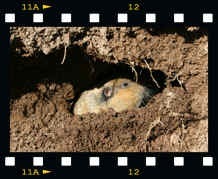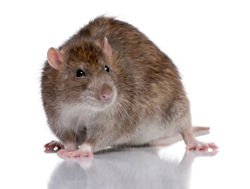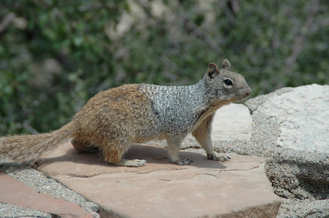Small pest control problems can grow into huge problems if they are not dealt with in a timely fashion. A tiny rodent no bigger than the mouse for your PC may mate and multiply into hundreds, causing tens of thousands in damages to your property. And house-dwelling pests can wreak mayhem in the form of broken plumbing, electrical fires, foundation collapse, and even gas explosions.
Gophers

Gophers usually do not accomplish major damage to houses. Misguided attempts to kill gophers, however, can have catastrophic results. You can see a picture of a pocket Gopher at NWF.
Gopher tunnels sometimes lead to foundations and basements. Filling a gopher tunnel with poisonous carbon monoxide can release poisonous fumes not just into your basement but into the first floor of your house. Pumping a gopher tunnel with carbon dioxide usually does not suffocate any gophers, but the gas can accumulate in your basement and suffocate you. Gas bombs and flame throwers have similar results. Flooding gopher tunnels can cause porches and decks to slant or even collapse.
Moles
Moles are almost never seen inside the house, except when flooding rains force them inside. Since moles eat up to 80% of their weight in worms nearly every day, any mole taking refuge in your house will quickly starve—but be careful that its last meal is not your finger!
Raccoons
Raccoons usually do not do substantial damage to houses. They may damage wires or pipes running underneath decks or porches and they may overturn garbage bins, but their damage to home’s structure is usually minimal.
Roof rats
Roof rats, which are also known as black rats, climb up gutters and through sewer gas vents to the roof of your home. Once on your roof, they look for entrances to your attic. They are only too happy to walk right through open doors and windows, or they may gnaw through eaves and overhangs to make your attic their home.
Attics are prime nesting territory for roof rats. Each female rat breeds as soon as 2 days after giving birth, up to 5 times per year, each time giving birth to 5 to 8 pups. While rats will climb out of you attic and forage for food during the night-time, they will return to during the day for protection from predators. Since feces and urine give away their location, they will use your attic for their toilet and your insulation for their bedding. Gnawing rodents in your attic can chew through electrical insulation and start fires, or they may dislodge fire protection systems and drench the lower levels of your home with water. Black rats can chew through plastic, wood, copper, and lead. Rex E. Marsh a Specialist in Vertebrate Ecology has written quite a detailed study on them.
Brown rats

Brown rats, which are also known as Norway rats, are ground dwellers. These are the rats that like to congregate in your basement, eating any food you may have stored in cloth sacks or cardboard boxes, and making their nests in mattresses and couch cushions. A cat is no defence against a pack of rats in the basement. If you don’t leave your cat a means of escape from rats, it is just as likely that a cat locked in the basement will be eaten by rats as it is that your cat will capture and kill even one rat.
Any kind of rat in your indoor living space spells trouble. Rat droppings are unsightly and unsanitary. Rat urine can ruin carpets, drapes, and upholstery. Rats can invade your pantry, your clothes hampers, your bedding, and your file cabinets. Worst of all, everything rats do is where they are most likely to encounter young children and pets.
Skunks
Skunks seldom do damage to the structure of your house. A skunk that gets inside your house, can release scent that sends you scampering away for days or even weeks and that will linger on almost any kind of surface for months. You can see a picture of them on the National Geographic site.
Squirrels

Squirrels, it is easy to forget, are rodents just like rats. Squirrels are better equipped to reach the roof of your house, sometimes jumping from as far as 8 meters (25 feet) away. The squirrel can gnaw through fascia or siding to reach your attic and set up housekeeping. Just like rats, squirrels raise large litters and have no scruples about using your ceiling for their toilet. Squirrels also can gnaw through the insulation that keeps your house from getting too hot or too cold and compromise both water lines and electrical wires.
Take charge of pests before they take charge of your home. Throughout this site, you will find reviews on devices for pest control and detailed help and advice for dealing with rats, raccoons, gophers, squirrels, and moles that will enable you to take timely and humane measures to prevent damage to your house and your health.

We have had a bad problem with moles in our front garden in an area next to our family room. A year ago we found deterioration of the front wood paneling at the dirt line but we quickly hired a reliable handyman to replace all of the wood frame and exterior wood along the bay window of the family room. In order to kill off moles U put down some mole poison in dome of the holes. Now we discovered a bad small in the family room. We can only guess where it’s coming from. My wife is a cancer patient so I am trying to pursue options with least disruption to her. Any suggestions.
Hi Jerry,
I assume you think the bad smell is coming from the poisoned moles. If that is the case, then as the mole’s decay further the smell will naturally go away.
I suggest you use mole traps next time.
Cheers,
Simon